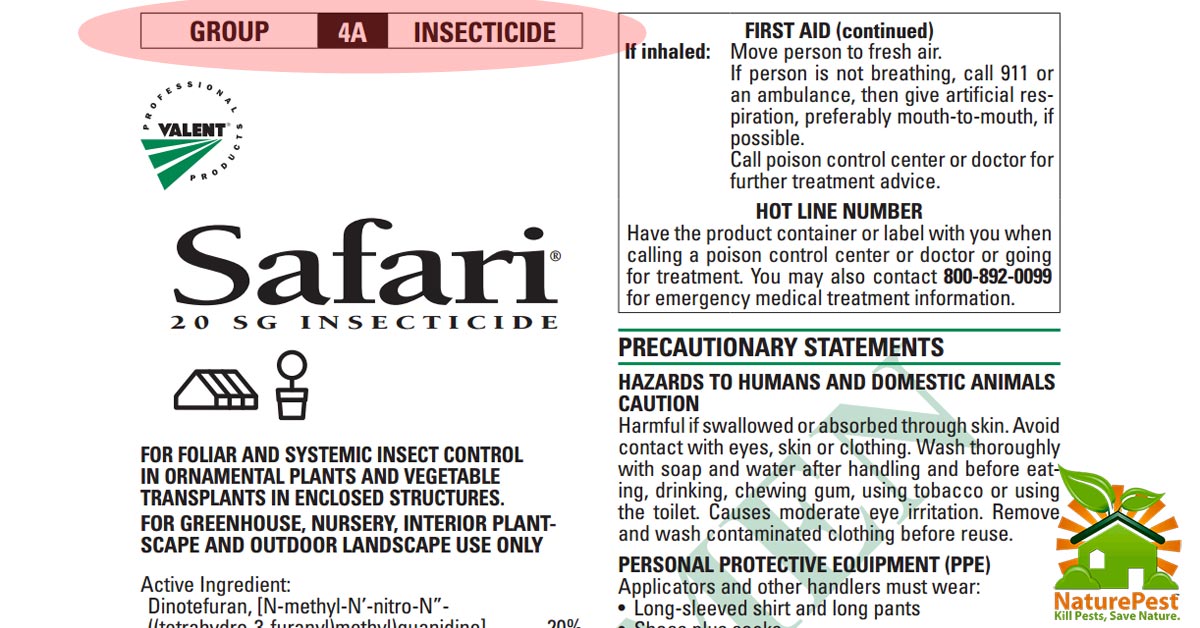Understanding how an insecticide class mode of action works

Have you had the same pest control guy for ten years and all of the sudden he’s no longer controlling any of your bugs, he’s spraying the same way he always has but not getting control. You probably come to think he’s watering down the chemical to save money when in reality he might have a resistance to a insecticide class mode of action.
Most people seem to have a general idea about how pesticides work, they kill a pest. But I’m talking about understanding how an insecticide works to kill the pest. If you don’t understand this don’t feel bad most pest control people don’t either.
What I mean by understanding how an insecticide works to kill a pest is the mode of action. Let me explain, the mode of action, does it paralyze it when it comes in contact with the insect or is it a stomach poison that has to be ingested in order to kill it?
There are 29 modes of action and even a list of unknown modes of action, from those that affect nerves and muscle, growth, respiration or are eaten and affecting the midgut.
Why is this important?
Because not understanding this will not give you the control you are expecting and the over use of one specific mode of action product can lead to resistance issues, you might not think this is a huge problem because you see a million products on the shelves with different names and assume if one doesn’t work just change brands.
It’s funny that’s what some pest control professionals think also, the reality is that for home, lawn and garden pest control there aren’t but a few types of modes actions available that are considered safe to use in those environments by non professionals.
For example the mode of action in Sodium Channel Modulators include the active ingredients of Pyrethroids and Pyrethrin if the insect becomes resistant to the mode of action it could become resistant to all the active ingredients in the category. See the problem!
Sodium Channel Modulators like Pyrethrins and pyrethroids act on channels through which the sodium is pumped to cause an excitation of the neurons. They work by preventing the sodium channels from closing, the result is a continual nerve impulse transmission leading to tremors and eventually death.
All The following active ingredients fall under the same class 3 Pyrethroids
Acrinathrin, Allethrin, Bifenthrin, Bioallethrin, Bioallethrin S-cyclopentenyl, Bioresmethrin, Cycloprothrin, Cyfluthrin, Cyhalothrin, Cypermethrin, Cyphenothrin, Deltamethrin, Empenthrin, Esfenvalerate, Etofenprox, Fenpropathrin, Fenvalerate, Flucythrinate, Flumethrin, Halfenprox, Kadathrin, Phenothrin, Prallethrin, Pyrethrins (pyrethrum), Resmethrin, Silafluofen, Tefluthrin, Tetramethrin, Tetramethrin, Tralomethrin, Transfluthrin, alpha-Cypermethrin, beta-Cyfluthrin, beta-Cypermethrin, d-cis-trans Allethrin, d-trans Allethrin, gamma-Cyhalothrin, lambda-Cyhalothrin, tau-Fluvalinate, theta-Cypermethrin, zeta-Cypermethrin.
This is why it’s important to ignore BRAND names and pay attention to Active Ingredient and the mode of action and know which active ingredients are in that mode. It is important to select the right mode of action that will not only control the pest but also know which active ingredients are in that mode to rotate the products correctly.
Never make the common mistake most people make including professional pest control technicians in sticking with one mode of action because it seems to solve all your problems because one day it will no longer perform for you and you will be in a world of hurt.
Your pest control service should never be performed in the same manner, it should be an integrated service including sprays, baits granular, and gels.
It may feel comforting to see your technician doing your service the same way every time but he’s actually doing you a disservice.






